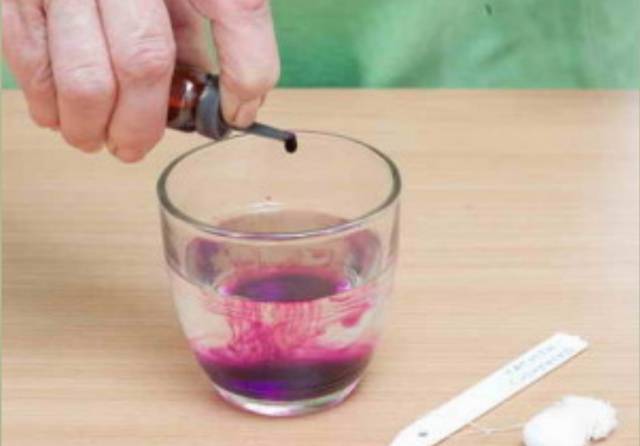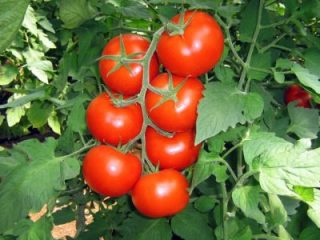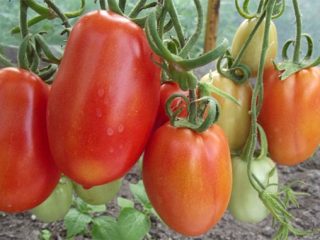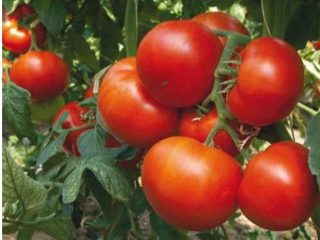Content
When choosing seeds for sowing, every gardener worries about whether the tomatoes will behave in the garden as described. It is on every packet of seeds. But not everything is reflected there. Experienced sellers know much more about tomato varieties.
The above scene perfectly characterizes the Nikola tomato variety. It was at the city market. A woman approached the counter and began meticulously choosing tomato seeds. The seller offered her both, but nothing suited her. In the end, he said: “Plant Nikola, a reliable, proven variety.” The woman replied: “I planted it, I didn’t like it.” The seller was amazed: “Well, if you don’t like Nikola, then I have nothing more to offer.” This short dialogue is evidence of the excellent reputation of the variety among sellers, and they are well versed in this.
Gardeners also agree with them. Reviews from those who planted Nikola tomatoes confirm this. Over the 25 years that have passed since the Nikola tomato was included in the State Register of Breeding Achievements, many new varieties have been created, but it does not lose its position and is invariably in demand among gardeners. Let's make a detailed description and description of the Nikola tomato variety and look at its photo.
Description and characteristics
The Nikola tomato was bred by Siberian breeders at the West Siberian Vegetable Experimental Station in Barnaul.The variety was tested in the harsh continental conditions of Siberia and is intended for cultivation in regions with a similar climate: Volga-Vyatka, West Siberian, East Siberian and Middle Volga. The summer here is hot but not too long, sometimes with little rainfall. Fluctuations in average daily temperatures can be large. The Nikola tomato variety is well adapted to all these weather conditions. It was bred for growing in open ground, but it can also grow in a greenhouse. Many seed companies have successfully produced and distributed seeds of this variety.
What can you say about the Nikola tomato:
- It belongs to determinate varieties and has a low bush: depending on growing conditions, from 40 to 65 cm.
- The bush is not spreading, not very leafy, the leaf is ordinary. The flower brush is tied under the 7th leaf. It can contain up to 7 fruits.
- Tomato Nikola does not require gartering or pinching.
- According to the ripening period, this variety is classified as mid-early. The first tomatoes can be picked already at 105, and in cool summers at 115 days from emergence.
- The fruits have an uneven weight, which ranges from 100 to 120 g.
- The shape of the fruit is standard, flat-round, their color is rich red. They are multi-chambered and have a good taste with a slight sourness.
The variety was created as a commercial one, it is well stored and can be transported well. - Nikola tomatoes are delicious in summer salads and suitable for all types of preparations. They are well suited for whole-fruit canning, retain their shape during pickling and salting, and the skin does not crack. The considerable content of dry substances – up to 4.8% – makes it possible to obtain high-quality tomato paste from them.
- The productivity of tomatoes of the Nikola variety is high and can be up to 8 kg per square meter. m beds. The tomatoes are ripening together.
In order for the description and characteristics of the Nikola tomato variety to be objective, it is necessary to talk about the disadvantages of the variety. According to gardeners, it is not very resistant to tomato diseases: blossom end rot, black spot, late blight. And if the first is a physiological condition, which can be easily corrected by treatment with calcium nitrate, then a whole range of measures will be required against fungal diseases.
How to care
The Nikola tomato variety needs to be grown through seedlings. Manufacturers advise doing this in March. For cultivation in the southern regions, tomato seeds are sown at the beginning of the month, for cool regions - closer to the end. Typically, seedlings are planted in open ground with 7 or 8 true leaves and an emerging flower cluster. With good care, it happens after 45 or 50 days.
Preparing the seedlings
Nikola tomato seeds can be collected from your own garden or purchased at a seed store.
In hot weather, tomatoes of different varieties growing nearby are cross-pollinated. If you take seeds from such fruits, you will not be able to preserve the Nikola variety.
Both purchased and own Nikola tomato seeds require pre-sowing treatment. The health of future tomato bushes largely depends on its correct implementation. How and with what to treat the seeds?
- For dressing, i.e., getting rid of possible pathogens located on the surface of the seeds, you can use a solution of potassium permanganate of 1% concentration. Selected Nikola tomato seeds are kept in it for about 20 minutes.Treated seeds must be washed with running water.
- For these purposes, you can also use a 3% concentration of hydrogen peroxide solution. It is heated to 40 degrees and the seeds are treated for 8 minutes. Be sure to wash them after processing.
- Treatment with a phytosporin solution prepared according to the instructions also gives a good result.
- Treated seeds are soaked in a growth stimulator. You can take the following drugs: Humate with microelements, Epin, Zircon. The soaking time and dilution method are indicated in the instructions.
You can germinate treated Nikola tomato seeds before sowing, but if you are confident in their good germination, you can sow them immediately. The soil for seedlings should be loose, absorb moisture well and allow air to pass through. Sow to a depth of about 2 cm in such a way that when picking, which is carried out in the phase of 2 true leaves, the roots of small tomatoes are not damaged. Before germination, tomatoes need greenhouse conditions. They are easy to create by placing a plastic bag over the container with the crops. You need to keep it in a warm place.
As soon as the first shoots appear, the container is placed on the lightest windowsill; the temperature at this time should be slightly below normal - about 16 degrees, and at night - about 14. But the maximum amount of light is needed. If the weather is cloudy, additional lighting with phytolamps will be required.
In a week, Nikola tomato seedlings will grow a root system.If they do not stretch out and remain strong and stocky, it means that the seedlings are being raised correctly. In order for her to grow well and in the future she will need:
- temperature is about 22 degrees during the day and a couple of degrees lower at night;
- sufficient amount of light;
- timely watering with warm, settled water as soon as the top layer of soil dries. Some gardeners allow seedlings to wilt by not watering them on time. This stress causes stunted growth and is harmful to tomatoes;
- timely picking into separate containers;
- twice fertilizing with a weak solution of mineral fertilizer: a week after picking and another 2 or 3 weeks later;
- hardening of Nikola tomato seedlings 2 weeks before planting in the ground.
Nikola tomato seedlings are planted only in warm soil. You need to wait until the end of spring frosts so that the planted plants do not freeze. Tomato Nikola is a cold-resistant variety, but the plants are powerless against frost.
Care after disembarkation
The soil for planting must be prepared and fertilized in the fall. In the spring, they just loosen the soil and apply starter fertilizer to the dug holes. You need to water the holes with plenty of water - at least 1 liter. If instead of water you use a solution of Fitosporin enriched with Gumi fertility elixir, the benefit will be double: Fitosporin will destroy the causative agents of many tomato diseases living in the top layer of soil, and Gumi will promote the rapid growth of the root system, which is important for plant development.
Further care for Nikola tomatoes is as follows:
- watering, the first time - after a week, then weekly, at the time of fruit filling - 2 times a week;
- mulching the soil with any biological material in a layer of 10 cm;
- fertilizing every decade with complex chlorine-free fertilizer in liquid form;
- treatment with calcium nitrate solution when filling fruits in the first cluster - prevention of blossom end rot;
- preventive treatments against late blight: before flowering with chemical protection agents, with the onset of flowering - with biological preparations and folk methods.
You can watch the video about the features of growing Nikola tomatoes:



















